Contents
Natural Language Processing (NLP) powers many AI-driven tools, from chatbots to sentiment analysis systems. By breaking NLP into structured phases, we can effectively transform raw text into actionable insights. These phases guide tasks such as text preprocessing, syntax parsing, and semantic analysis, forming the backbone of NLP applications.
With the global NLP market projected to hit $61.03 billion by 2030, its importance across industries continues to grow. In this blog, we’ll explore the top 5 phases of NLP, their role in delivering impactful solutions, and how to optimize NLP workflows for success.

What is Natural Language Processing (NLP)?
Natural Language Processing (NLP) is a field within artificial intelligence that focuses on enabling machines to process, analyze, and interpret human language. It works by breaking down language into smaller, manageable components, allowing computers to extract meaning and respond effectively. NLP is the foundation of various AI applications, including chatbots, virtual assistants, and language translation tools.
By utilizing structured processes, NLP converts raw text into insights that are valuable for decision-making and improving user experiences. Its applications are vast, spanning industries like healthcare, finance, and e-commerce, driving advancements in automation and communication.
The 5 Phases of NLP
Natural Language Processing (NLP) involves a structured approach to transforming raw text into meaningful insights. Now, we will examine the 5 phases of NLP, their purposes, and the techniques/tools involved in each step.
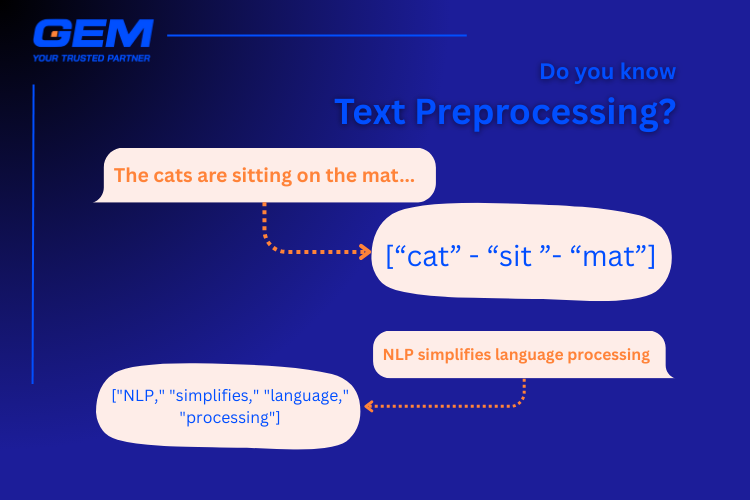
Phase of NLP – 1 Text Preprocessing
Text preprocessing is the foundational step in NLP. The objective is to prepare raw input data by cleaning and organizing it into a structured format. This step reduces inconsistencies and irrelevant details, ensuring the data is optimized for further analysis.
Purpose:
To standardize, organize, and clean text to make it ready for deeper processing. This phase addresses challenges like handling noise, diverse formats, and varying text lengths.
Key Techniques:
- Tokenization: Splits text into smaller units such as words, sentences, or paragraphs. For example, the sentence “NLP simplifies language processing” is tokenized into [“NLP,” “simplifies,” “language,” “processing”].
- Stopword Removal: Removes common words (e.g., “and,” “the,” “is”) that do not add significant meaning to the analysis.
- Stemming and Lemmatization: Reduces words to their root forms. For instance, “studying” may be reduced to “study.”
- Text Normalization: Converts text into a unified format by processes like lowercasing, removing punctuations, and standardizing abbreviations.
Example: Preprocessing the sentence “The quick brown fox jumps!” might result in [“quick,” “brown,” “fox,” “jump”].
Tools: Widely used tools for this phase include SpaCy, NLTK, and TextBlob, which offer robust preprocessing functionalities.
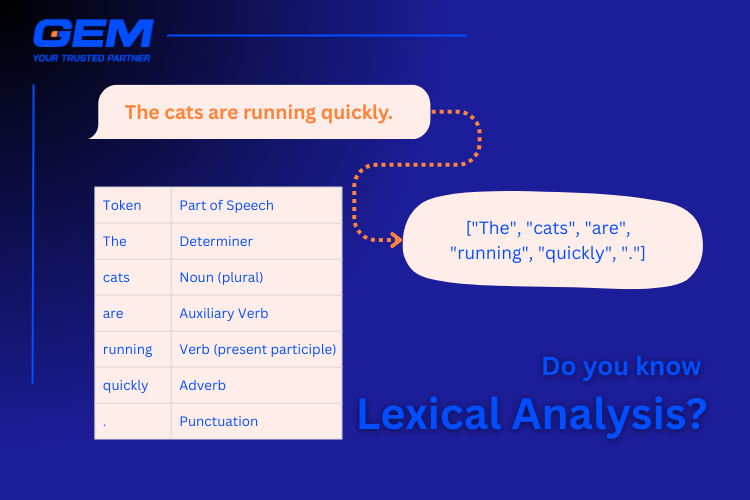
Phase of NLP – 2 Lexical Analysis
Lexical analysis breaks text into meaningful elements called lexemes and identifies their grammatical roles. This phase also involves analyzing the smallest language units, known as morphemes, which are essential in understanding word formation.
Purpose:
To segment text into basic units and categorize them for grammatical analysis. This phase is crucial for understanding how words function within a sentence.
Key Concepts and Techniques:
- Lexemes: Words or phrases extracted from the text. For instance, in the sentence “Language is powerful,” the words “Language” and “powerful” are lexemes.
- Parts of Speech (POS) Tagging: Assigns grammatical labels like noun, verb, or adjective to each word. For example, “run” in “I run daily” is tagged as a verb, while in “a long run,” it is tagged as a noun.
- Morphemes: The smallest units of meaning in a word.
- Free Morphemes: Can function independently as words (e.g., “book,” “chair”).
- Bound Morphemes: Require attachment to other morphemes (e.g., prefixes like “un-” in “undo” or suffixes like “-ed” in “worked”).
Example: Breaking down “unforgettable,” the analysis identifies “un-” (a prefix conveying negation), “forget” (root or free morpheme), and “-able” (a suffix suggesting capability).
Tools: Tools like Stanford NLP, CoreNLP, and OpenNLP are commonly employed for lexical analysis tasks.
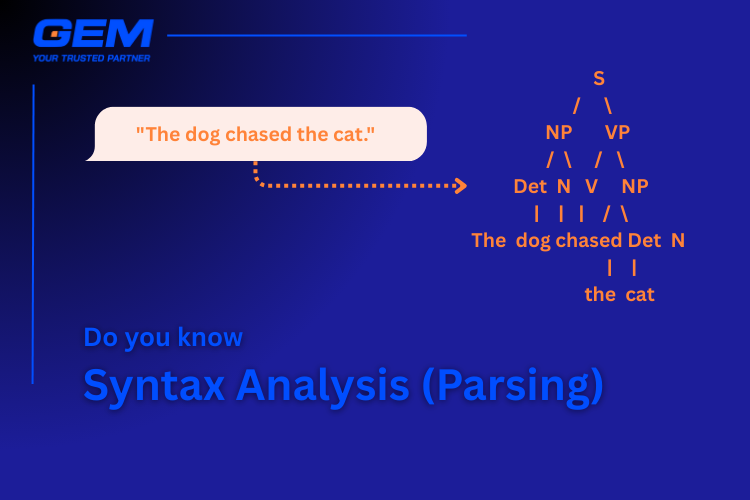
Phase of NLP – 3 Syntax Analysis (Parsing)
Syntax analysis examines the grammatical structure of a sentence, focusing on how words and phrases are arranged and related to each other. This phase helps uncover the relationships between different elements in a sentence.
Purpose:
To analyze the grammatical arrangement of text and uncover the structural relationships between words and phrases.
Key Techniques:
- Dependency Parsing: Maps the relationships between words in a sentence. For example, in “The cat chased the mouse,” the verb “chased” is the central word, while “cat” and “mouse” depend on it.
- Constituency Parsing: Breaks the sentence into sub-phrases, like noun phrases and verb phrases, to understand the hierarchical structure.
Example: For the sentence “The dog barked loudly,” dependency parsing identifies “dog” as the subject of “barked,” while “loudly” modifies the verb.
Tools: Syntax parsing can be performed using tools like SpaCy, AllenNLP, and Berkeley Parser, which support advanced parsing techniques.
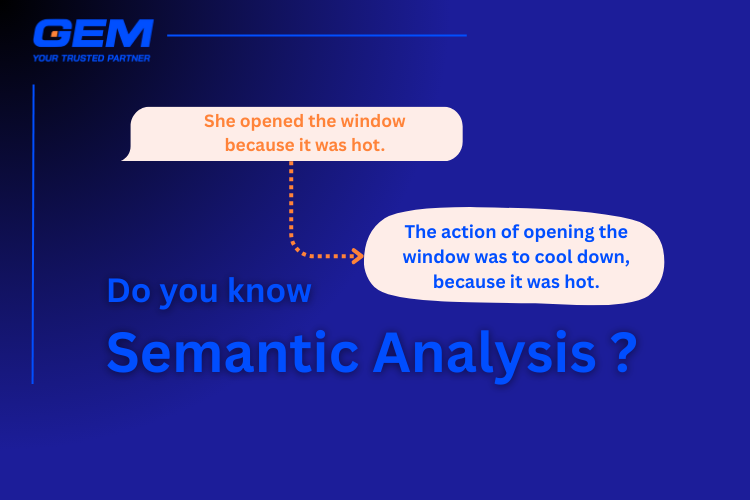
Phase of NLP – 4 Semantic Analysis
Semantic analysis focuses on deriving meaning from text, interpreting relationships between words, and understanding the intent of the text. This phase goes beyond grammar to uncover the meaning behind words and sentences.
Purpose:
To capture the meaning of text by interpreting context, identifying relationships, and uncovering intent.
Key Techniques:
- Word Sense Disambiguation: Identifies the correct meaning of a word based on context. For instance, the word “bank” could refer to a financial institution or the side of a river, depending on its usage.
- Named Entity Recognition (NER): Detects and classifies entities such as names, locations, dates, or organizations. For example, in “Alice visited Paris on Monday,” NER identifies “Alice” as a person, “Paris” as a location, and “Monday” as a date.
Example: In the phrase “John went to Apple,” semantic analysis determines whether “Apple” refers to the company or the fruit by analyzing the surrounding context.
Tools: Semantic analysis often uses tools like BERT, Hugging Face Transformers, and Flair.
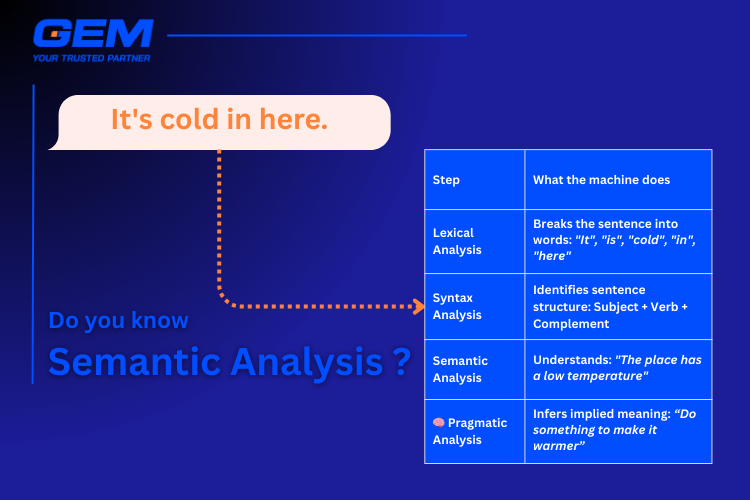
Phase of NLP – 5 Pragmatic Analysis
Pragmatic analysis goes beyond the literal meaning of words, focusing on implied meanings, tone, and context. This phase is essential for interpreting nuances, sarcasm, and cultural references.
Purpose:
To interpret implied meaning, tone, and intent by considering the context in which language is used.
Key Techniques:
- Contextual Analysis: Examines the broader context to determine meaning.
- Sentiment Analysis: Identifies the emotional tone of the text, such as positive, negative, or neutral sentiment.
Example: In the statement “Oh, that’s just fantastic!” pragmatic analysis determines if the tone is genuine or sarcastic based on the context.
Tools: Tools like VADER, TextBlob, and IBM Watson NLP are commonly used for pragmatic analysis.
Transform Your Business with the Power of Technology
Adopt AI, cloud solutions, and advanced analytics to reimagine your operations and stay ahead of the competition. Let’s future-proof your business together.
Applications of NLP Across Industries
By bringing NLP into their operations, organizations are addressing industry-specific challenges, improving decision-making processes, and creating tailored customer experiences.

Real-World Applications of NLP
Customer service
NLP has become an integral part of enhancing customer interactions. Chatbots and virtual assistants, powered by NLP, provide human-like responses, handle repetitive queries, and offer 24/7 support. Businesses in sectors like retail and telecom use such solutions to handle high volumes of interactions while maintaining a personalized touch. For example, chatbots can guide customers in tracking orders or resolving service issues.
Healthcare
In healthcare, NLP is used to extract valuable insights from patient records, medical notes, and research articles. By analyzing unstructured data, healthcare providers can identify meaningful patterns and streamline administrative tasks, such as summarizing clinical information. NLP also supports diagnostic processes and matches patients with clinical trials more effectively.
Explore more: How Natural Language Processing Supports Healthcare Industry
E-commerce
E-commerce platforms use NLP to create personalized shopping journeys by interpreting customer searches, reviews, and browsing behaviors. Recommendation systems leverage this data to suggest products that meet individual preferences. Sentiment analysis helps businesses evaluate feedback from customers, enabling them to better understand their audience.
Finance
The finance sector adopts NLP for automation and fraud detection. By processing large volumes of contracts, loan applications, and compliance documents, NLP tools reduce manual workloads. Fraudulent activities are flagged by analyzing transaction patterns and communication data, so companies can act quickly to mitigate risks.
Media and Entertainment
NLP in media boosts user engagement by personalizing content recommendations for articles, videos, and music playlists. Automated subtitle generation makes video content accessible to a wider audience, and NLP-powered tools curate content according to user’s preferences, improving their overall experience.
Explore more:
Info: How Natural Language Processing is Transforming Businesses
Case study: Developing NLP-based English learning applications

Emerging Use Cases of NLP
As NLP capabilities expand, new applications are emerging to address complex challenges in various fields:
- Conversational AI: Advanced conversational systems are now handling more sophisticated interactions. They are being applied in education as virtual tutors and in legal services to simplify complex documentation for clients, making information more approachable.
- Multilingual NLP: Businesses are overcoming language barriers by adopting multilingual NLP solutions. Real-time translation tools are helping companies communicate with global audiences, while multilingual content creation allows brands to expand into international markets seamlessly.
- Sentiment Tracking in Real-Time: Businesses are actively using NLP to monitor public sentiment on platforms like social media. This helps brands gauge customer reactions during product launches or respond swiftly to crises, giving them a competitive edge in understanding their audience.

Tips for Optimizing NLP for Your Business
NLP can bring transformative value to businesses when approached strategically. However, aligning NLP with your organization’s goals requires careful planning and execution. From our experience working on AI and advanced solutions, these are four actionable strategies to make NLP a valuable addition to your business, including how expert collaboration can simplify the process.
Imagine What You Could Achieve
with AI Streamlining Your Operations
Transform your operations with precise, AI-driven workflows. From reducing errors to improving speed, achieve operational excellence and drive sustainable growth.
- Partner with an AI Expert to Build a Strong Foundation
A specialized partner who understands the phases of NLP can help your business navigate the complexities of NLP adoption. They provide expertise at every stage, from identifying use cases to deployment. Collaborating with an expert early helps organizations avoid common roadblocks, adopt best practices, and create solutions tailored to their needs.
- Define Clear Goals that Address Business Needs
The first step in optimizing NLP is identifying the specific problems the technology will solve. Organizations should focus on areas where automation or data analysis can make a measurable difference, such as improving customer service, analyzing data for trends, or developing personalized user experiences. Establishing focused goals allows businesses to allocate resources efficiently and prioritize initiatives with measurable outcomes.
- Prepare High-Quality Data for Model Training
The performance of NLP systems depends heavily on the quality of the data they process. Businesses should refine and structure their data by removing inconsistencies, standardizing formats, and preparing it for machine learning models. This step is crucial for creating systems that provide accurate and reliable results. Collaborating with an AI expert can simplify this process, ensuring the data meets the requirements of advanced NLP models.
- Regularly Monitor and Update Systems
Once NLP solutions are deployed, ongoing evaluation is vital to keep them relevant. Language evolves, and business priorities shift, requiring models to be updated with new data and retrained periodically. Regular monitoring allows businesses to identify areas for improvement and maintain the accuracy and relevance of their systems. Feedback from users can also be used to refine functionality and adapt to new challenges.
Explore: NLP-enabled text summarization engine for Japanese documents

GEM is an ITO specializing in a wide range of services, from digital transformation to advanced solutions like Artificial Intelligence (AI) and Natural Language Processing (NLP). We develop custom solutions tailored to unique business needs, leveraging our expertise in various NLP phases such as data analysis, model development, and deployment. Our offerings include AI-powered chatbots for natural interactions, predictive systems for personalized experiences, and generative AI to enhance automation and efficiency.
Takeaways
NLP has gained attention for its applications in chatbots, text analysis, and automation, but successfully implementing these requires understanding the 5 phases of NLP: Text Preprocessing, Lexical Analysis, Syntax Analysis (Parsing), Semantic Analysis, and Pragmatic Analysis. These phases form the foundation of any NLP system, assisting businesses to process language effectively and extract meaningful insights from data. They open the way for businesses to develop solutions that streamline processes, improve customer interactions, and unlock the potential of unstructured text.
Discover the full potential of NLP with GEM’s expertise in creating customized, industry-specific solutions.
CONTACT US TODAY to find out how we can transform your business using advanced AI and NLP technologies.






